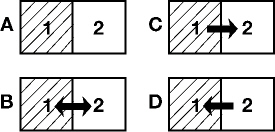Modified True/False
Indicate
whether the statement is true or false. If false, change the identified word or phrase to make
the statement true.
|
|
|
1.
|
The transfer of heat by direct contact between particles of matter is called
insulation. _________________________
|
|
|
2.
|
Molecules made from long chains of repeating units are called polymers.
_________________________
|
|
|
3.
|
The tendency of a solid to crack or break instead of stretching when force is
applied is called ductility. _________________________
|
Multiple Choice
Identify the
choice that best completes the statement or answers the question.
|
|
|
4.
|
The phase of matter that maintains it shape when a force is applied to it
is:
a. | plasma. | b. | gas. | c. | liquid. | d. | solid. |
|
|
|
5.
|
A solid that has the ability to bend without breaking is considered:
a. | ductile. | b. | elastic. | c. | brittle. | d. | crystalline. |
|
|
|
6.
|
An important crystalline substance used for making microscopic electronic
circuits is:
a. | sodium. | b. | iron. | c. | silicon. | d. | oxygen. |
|
|
|
7.
|
Solids made from long chains of individual molecules are called:
a. | crystals. | b. | polymers. | c. | amorphous. | d. | metals. |
|
|
|
8.
|
Examples of amorphous solids include all of the following EXCEPT:
a. | salt. | b. | rubber. | c. | wax. | d. | glass. |
|
|
|
9.
|
Plastics are useful for all of the following reasons EXCEPT they:
a. | are strong. | b. | can be easily molded. | c. | have good
elasticity. | d. | have melting temperatures below room temperature. |
|
|
|
10.
|
Two objects, 1 and 2, are in contact with one another. At the beginning, the
temperature of object 1 is 100ºC and the temperature of object 2 is 200ºC.  Which diagram represents the direction in which heat will flow between objects 1
and 2?
|
|
|
11.
|
Heat conduction can NOT take place between two objects if:
a. | the total internal kinetic energy of the two objects is the same. | b. | the objects are in
contact. | c. | the temperatures of the two objects are different. | d. | the two objects are
in thermal equilibrium. |
|
|
|
12.
|
Of the following, the poorest conductor of heat is:
a. | a balloon filled with air. | b. | a glass of water. | c. | a
vacuum. | d. | a copper wire. |
|
|
|
13.
|
The air near the ceiling of a classroom has a temperature of 30°C while the
air near the floor has a temperature of 27°C. What conclusion can you make about the air in the
room?
a. | The air near the ceiling is more buoyant than the air near the
floor. | b. | The air near the ceiling is less buoyant than the air near the
floor. | c. | The air near the ceiling has the same density as the air near the
floor. | d. | The air near the ceiling is more dense than the air near the
floor. |
|
Completion
Complete each
statement.
|
|
|
Select the correct term to complete each sentence. There are extra terms in
the list.| gravitational | intermolecular | oxygen | | nitrogen | conduction | convection | | liquid | solid | brittle | | elastic | crystalline | amorphous | | equilibrium | gas | density | | | |
|
|
|
14.
|
Two objects are in contact. If they have the same temperature, they are in
thermal _________________________.
|
|
|
15.
|
Solids with no repeating pattern of molecules or atoms, such as plastics, are
called ____________________ solids
|
|
|
16.
|
If an object is stretched or compressed and it returns to its original shape it
is ____________________.
|
|
|
17.
|
Materials that maintain a constant shape when forces are applied are lacking
thermal energy to overcome intermolecular forces. They are in the ____________________ phase.
|
Short Answer
|
|
|
18.
|
List 4 important physical properties of solids.
|
|
|
19.
|
What 2 conditions must be present in order for heat conduction to take
place between two objects?
|
|
|
20.
|
You can hold an open cup of liquid water, but you can’t hold a cup of
gaseous water vapor. Why not?
|